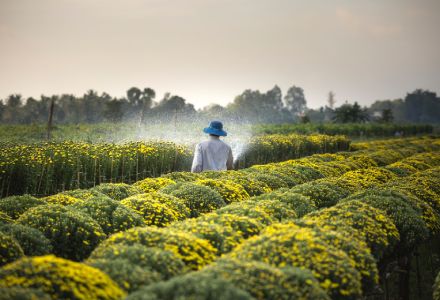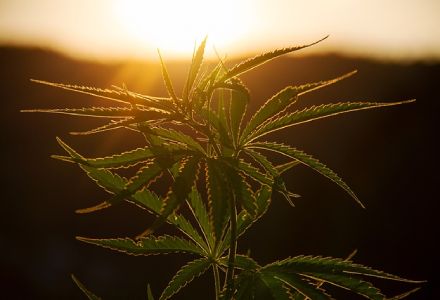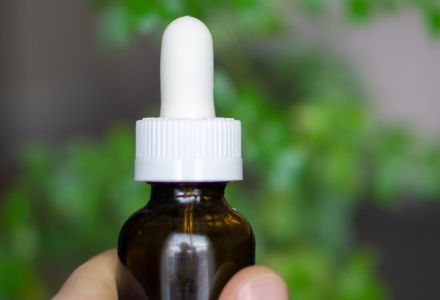Have you ever wondered if hemp, a source of various cannabinoids, vitamins and healthy fats, is good for the planet?
While the wellness industry often looks at the potential benefits of cannabinoids found in hemp, sustainability enthusiasts look at hemp from a very different angle.
Crops and products that are CO2 neutral or, even better, CO2 negative can be hard to find. Those interested in finding eco-friendly alternatives have been looking into hemp with high hopes.
Why is that? And are there any reasons to think why hemp might be a great tool on our quest to become more sustainable in a world that is, currently, so bad for the environment?
The different types of hemp and their uses
You may already know that hemp is a species of Cannabis sativa. But did you know, while all hemp is cannabis, not all hemp is the same?
Wild hemp
Hemp is so resilient that it can grow in the wild. Wild hemp, also referred to as Cannabis Ruderalis, often grows in places where hemp was once a popular crop. Native to Russia, wild hemp can still be found mostly in eastern Europe, as well as Central and Western Asia.
Its superpower is that it can survive and thrive in various environments, including those that are notcomfortable for most other plant species.
Wild hemp is also known for its ability to autoflower. While most cannabis plants require both male and female plants to flower, wild hemp is self-sufficient.
Uses:
While wild hemp might not be as good of a fibre source as industrial hemp, wild hemp is often used by cannabis cultivators who are trying to create new cannabis strains with autoflowering capabilities.
Industrial hemp
Industrial hemp is grown by farmers on their farmland, just like any other crop. However, in most places around the world, a government-issued permit is required and it can only be grown and used if the THC content of the crop does not exceed 0,3%.
Just like wild hemp, industrial hemp has a low CBD content and lacks any significant amounts of THC that would cause intoxication upon consumption.
Uses:
Every part of the plant, from the seeds to the flowers, can be used in one way or another. Industrial hemp can be used to create fabrics, fuel, plastic alternatives, hempcrete, paper, food, cosmetics and much more.
It is such a versatile plant that BMW uses hemp to build parts of their cars in their pursuit for more sustainable manufacturing solutions.
Organic hemp
Organic hemp is industrial hemp that has been grown using methods and materials that have a low impact on the environment.
To be certified as organic, hemp must be grown on land that has not used any materials prohibited by organic certification bodies for as long as up to 36 months before harvesting. Synthetic fertilisers and pesticides are good examples of such materials that are considered unhealthy and non-organic.
So why does this all matter? Because hemp can clean up the soil on which it grows. While this is a wonderful benefit for the planet and for farmers who want to sow crops on previously polluted land, this becomes a problem when hemp is used to make products designed for human consumption.
If hemp is grown on non-organic soil, there is always a chance that pollutants extracted from the ground will end up in the final product. While this is not a problem when hemp is being used for its fibre, it is a problem when it is being used to make products such as cosmetics or food.
This is why, at Herbliz, we only use organic hemp.
Uses:
Organic hemp is used for consumer goods and food, including personal care products and supplements in countries where such products are legal.
The advantages of hemp as a crop
Hemp is very easy and cheap to grow. It requires a limited amount of space (compared to other crops) and is famously resilient to many pests. In addition, it does not require the use of any, or very few pesticides and herbicides, allowing for good farming practices that do not pollute the soil with harsh chemicals.
Hemp can also be used to clean the land from many potentially dangerous pollutants, including heavy metals and pesticides as mentioned above.
It's one of the fastest-growing plants on the planet, meaning a lot of it can be harvested in a short period of time.
Hemp is also not a very demanding crop to grow. Contrary to its cousin marijuana, hemp can thrive with varied sun exposure and in various weather conditions..
The world is dealing with the problem of excessive CO2 production and farming is one of the biggest offenders. Hemp is carbon negative, making it a great solution to this ever increasing problem.
This amazing crop may even be able to clean the air better than trees when we compare the amount of space on which it needs to grow. It can also be used as a sustainable alternative for making hemp paper, as the process requires fewer chemicals and less bleach. This is due to hemp being naturally brighter than trees.
Are there any disadvantages to hemp?
While using hemp as a sustainable alternative does have some disadvantages, most of them are due to prohibition slowing down the progress and development of technologies that would allow for more efficient and widespread use.
The world has learnt how to produce plastic and fuel on a massive scale through exploiting finite resources, but the same cannot be said for hemp. The same goes for skills. For example, people worldwide know how to work with cotton fabrics, but only a selected few know how to work with hemp fabrics. Learning to work with hemp alternatives will require a lot of time, effort and, most importantly, willingness.
Unfortunately, even though hemp is more sustainable than many other popular raw materials, it is also more expensive. This is due to the lack of well-developed supply chains and a limited number of producers.
Hopefully, this will change with time. If all goes well, the more popular hemp becomes, the cheaper it will be to use it.
Is legalisation leading to more sustainability?
Hemp legalisation is a double-edged sword. Thanks to the liberalisation of hemp laws, we can now grow and use it. Even more importantly, we are yet again able to freely research hemp and discover (or rediscover) its many sustainable applications and uses.
Saying that the strict law on the THC content of industrial hemp plants does lead to a lot of waste. Plants can not be fine-tuned like computers. So it happens that sometimes certain crops do exceed the allowed THC levels. This is usually done by accident but nevertheless often results in the farmer being forced to destroy his or her crops.
In some countries, only certain parts of the hemp plant can be used to extract CBD. This leads to farmers having to either destroy what they cannot use or sell to other countries, only adding to the carbon footprint through transportation.
Hemp's superpower - hemp and its historical use
We are not the first generation to discover the exciting properties of hemp.
Hemp was used centuries ago for fibre and food. Flags, sacks, sails and clothing were often made from hemp fabric. Hemp seeds were a staple food ingredient, and local medical healers across the world would use hemp plants to support people with various ointments.
In more recent history, hemp has been grown on heavily polluted soils, such as the soil that suffered from radiation exposure due to the Chernobyl catastrophe.
The more we learn and discover about hemp the more it feels like the only limitations it has are our knowledge and willingness to invest.
Based on the scientific proof and the historical uses, it seems like hemp might be one of the sustainable solutions we so desperately need. Whether that ends up being the case depends entirely on us.




